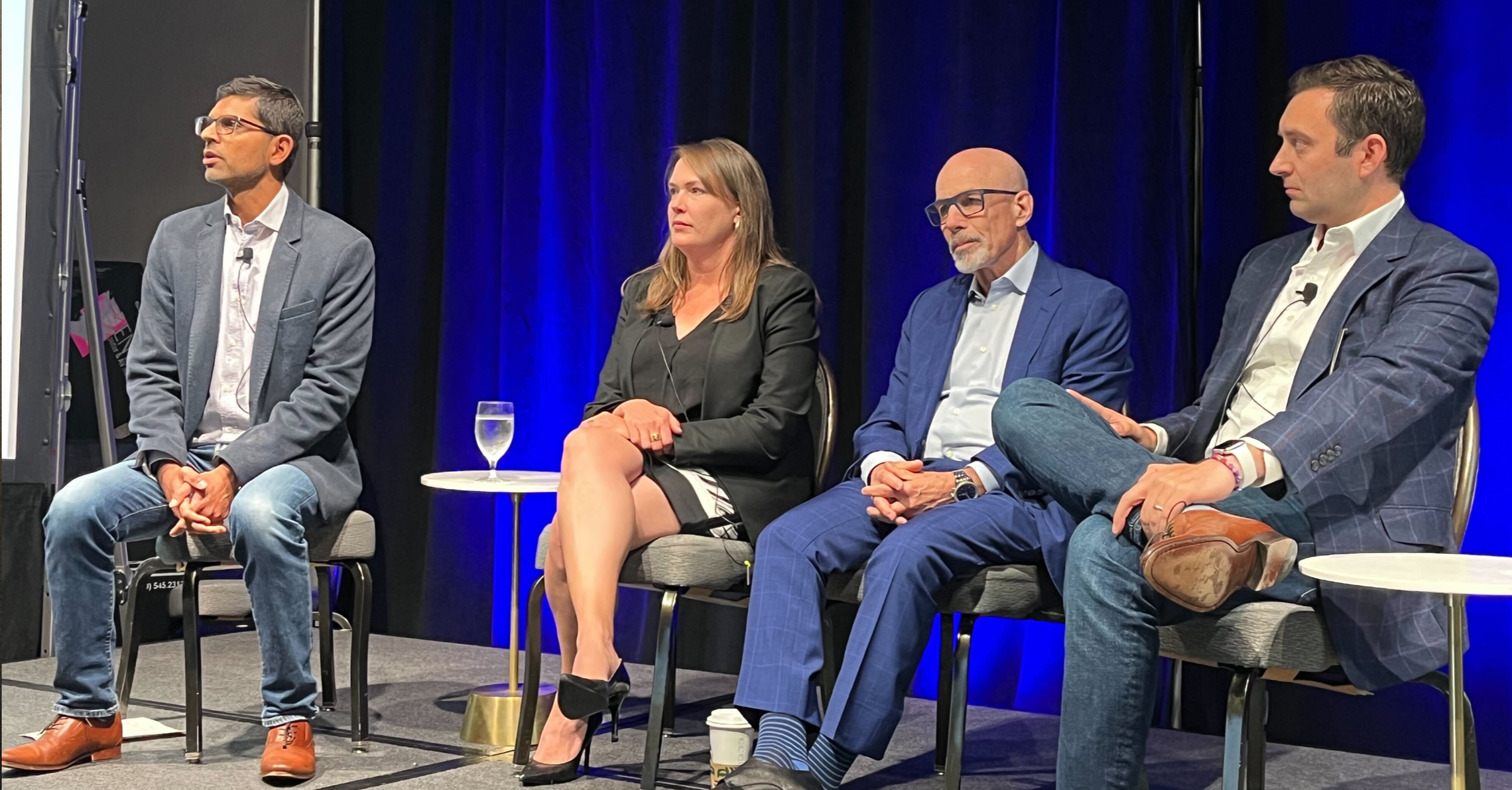
It was great to be back in person and in Boston for DTx East 2022. It was easily the best DTx event yet, and I enjoyed seeing friends and colleagues and making new acquaintances.
On day two of the conference, our CEO and Co-Founder, Kal Patel, MD moderated a panel discussion entitled, “Driving technology into workflows to scale transformation across healthcare systems.” Joining him on stage were Cynthia Church, Chief Strategy Officer, Xealth, Brad Gescheider, former VP and Global Head, Digital Innovation and Patient Services, Immunology at Sanofi and Chief Commercial Officer, Woebot Health, and Stephen Klasko, MD, former President, Thomas Jefferson University & CEO, Jefferson Health, and Executive in Residence, General Catalyst. It was a great discussion. Here are some highlights.
In the early days of digital health innovation there was so much focus on the building of new technology solutions—and comparably little on how to drive adoption and integration into the workflow. Digital innovators really didn’t consider how providers and other stakeholders would actually interact with the technology.
But has the pendulum swung too far the other way, with too much focus on integrating the whole solution into the EHR? We think so.
The proliferation of wearables and patient apps that help patients track their disease has created volumes of data—and it may be more efficient and effective for the provider to review that data just before or during a patient visit on a provider tab on an app.
The panelists suggested that solutions should focus on providers and address the health system pain points. As Brad pointed out, “biopharma and digital health companies are being asked to address tangible issues.” Cynthia explained that Xealth, who works with dozens of the largest health systems in the U.S., is focused on “ways to help address clinician shortages and burnout with automation to drive efficiencies.”
While the provider may be a champion for your digital solution, it’s important to recall that there are many other decision makers at the hospital including procurement, supply chain and the C-suite. Those audiences want to know how your digital solution will help to reduce costs, increase efficiencies and improve outcomes.
“In healthcare, we aim low and we exactly hit the mark,” noted Dr. Klasko early in our discussion. Workforce shortages, clinician burnout, lack of access and reimbursement, manual data entry, and the need for cost reductions are all creating the need for workflow improvements. “Health systems and clinicians want digital tools that reduce costs, increase access, improve quality of care and the patient experience.”
Cynthia agreed, “Things that were relevant to health systems six months ago aren’t relevant today. The focus has shifted from topline revenue to removing costs and increasing efficiency. The people and companies creating digital health solutions need to recognize this.”
Digital can play a tremendous role by automating processes, which in turn improves workflows. For instance, Cynthia explained how a maternity monitoring app addressed the clinician shortage issue, by tracking a pregnancy between visits. Again, the focus on the clinician is crucial to developing digital solutions that improve workflow. Brad explained that with biologics, tools are designed to reduce the burden on the clinicians to drive efficiency.
We recently launched the BrightInsight Ecosystem, which brings together the most forward-thinking healthcare, biopharma, medtech, tech companies and provider organizations, with go-to-market and delivery partners, strategic consultants and regulatory experts to drive systemic transformation of healthcare by promoting digital innovation, scale and adoption.
The panelists discussed the opportunities for our Ecosystem partners to enable workflow efficiencies and greater adoption of digital.
For instance, Xealth and BrightInsight are exploring ways patients could potentially benefit from a more coordinated approach between the care teams who order digital therapeutics for their patients and the researchers in life science companies creating innovative therapies. Cynthia suggests being “creative” in defining digital health and being open to bundling and partnering to make it easier for healthcare systems to adopt digital.
Dr. Klasko added that it can be easy for your point solution to become commoditized—that’s why bundling, as Cynthia notes, can deter commoditization. For instance, readmittance is a major concern for hospitals. And because there are so many possible drivers of readmission, solutions that address each of those—discharge, home care coordination, meal delivery, prescription filling and medication adherence, PT, etc.—together can help to reduce readmission.
Looking to next year’s event, here are the group’s predictions for the future:
Cynthia: “More larger employers will dictate to payers what they want their employees to use and what they are willing to pay for.”
Brad: “Outputs from beta digital health projects will show success and scale.”
Dr. Klasko: “Hospitals will create innovation super states.”
Kal: “We will see the return of investment flowing into digital health.”